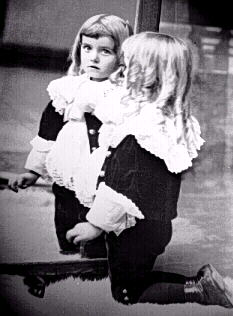Figure 1.--Middy blouses with sailor collars were one of the most enduring of all boys' fashions. They are still worn by the famed Vienna Boys' Choir.
Note: I have relatively little information on this topic and would
be very interesed in any information/insights/personal rememberences
that you may have.
Boys over the ages have worn a variety of shirt collars. Sometimes just like their dads.
Other times there were special juvenile styles.
Ruffled collars: Ruffled collars were widely used for boys in
Regency fashions during the late 18th and early
19th Centuries. The
most common style using ruffled collasrs were:
skeleton suits,
tunics, and
smocks. Often
the style was comfortable open collars, well suited for children. As
ypong boys and girls in the 19th century were often dressed alike in dresses,
the collar was sometimes used to diferentiate boys from girls. Often
the girls neckline might be cut lower while boys might have higher even
though fancy collars. There were no definite rules on such matters, however, and
mostly it was up to the fancy of the mothers.
Sailor collars: Middly blouses and sailor suits for boys first appeared in England during the 18th century. They became very popular for boys in England after Nelson's great victories over the French and especially when Queen Victoria began dressing her children in them during the
|
Figure 1.--Middy blouses with sailor collars were one of the most enduring of all boys' fashions. They are still worn by the famed Vienna Boys' Choir. |
Lace collars: Both men and boys wore lace collars during the Stuart period . The style was strongly influenced all over Europe by the court of the famed Sun King (Louis XIV) who dominated Europe throughout the 17th cebtury. A later reincanation ocurred in the

Figure 2.--This little boy in the 1890s sported beautifully done sausage curls. How his mother must have suffered when they were cut. Also notice the elaborate lace collar. |
Pilgram collars: Large white collars worn by the Pilgrams during
the Colonial period appear to have been worn by both men and boys.
Eton collar: Eton collars were large stiff white collars worn
by the students at Eton school. Given the prestige of Eton, the fashion
of
Eton suits became
widely worn both in England and America during the late 19th and early 20th
Centuries. Eton suits were worn by the junior boys at the school. They had short
jackets were worn with the stiff Eton collarsd. They certainly
looked uncomfortable, but many at the time did not believe
a boy to be well dressed without a Eton collar.
Soft collars: The standard soft collars generally worn by boys today
became accepted in the 1920s, replacing the Eton collars commonly worn at the beginning of the
century. Over time there have been many inovations worn by
both men and boys, such as tabs, pins, and the most enduring, button
downs. Some shirt inovations for men have not carried over to boys'
shirts collars. The British fasgion of white collars on colored stripped
shirts is little seen on boys' shirts. Incidentally one of the most
influential taylor is Thomas Pink of London and probably the origin of
the English phrase "in the pink". The company now has a wide range of colors
available, but most boys' dress shirts are still white or since the
1950s, blue.
School boys in England, however, often continue to wear gray.
Peter Pan collars: Peter Pan collars are more associated with curls. Younger
boys dressed in shortalls
or Eton suits for formal occasions commonly
wore Peter Pan collars beginning in the 1940s. The fashion passed
out of style for all but the youngest boys after the 1970s. I'm not sure as to how this style developed, but would be interested in any insights
visiors to this web site might have.
Navigate the Historic Boys' Clothing Web Site:
[Introduction]
[Chronologies]
[Style Index]
[Biographies]
[Bibliographies]
[Contributions]
[Boys' Clothing Home]
Navigate the Historic Boys' Clothing Web chronological pages:
[1600s]
[1800s]
[1880s]
[1900s]
[1920s]
[1950s]
Navigate the Historic Boys' Clothing Web style pages:
[Dresses]
[Smocks]
[Bodice kilts]
[Kilts]
[Sailor suits]
[Eton suits]
[Blouses]
[Ring bearer/page costumes]
[Shortalls]